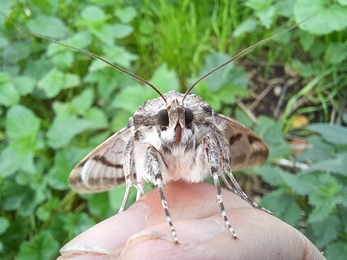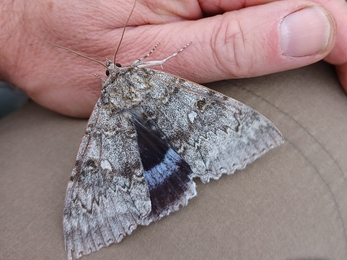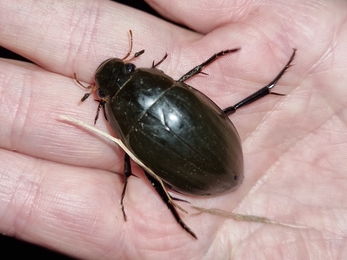The Norfolk hawker dragonfly had been recorded at the Great Fen in previous years, but not outside of Woodwalton Fen National Nature Reserve. This year it was finally seen on the restoration land, on the Northern Loop Trail, hunting over the wildflower meadows. This species was recorded on our ‘butterfly & dragonfly transects,’ as well as being seen multiple times on public events, including the ‘Dragonfly Wildlife Training Workshop' and this year’s ‘Great Fen Ecotour;’ the first time this ‘green-eyed’ beauty had been spotted on the tour!
We have had an increased number of sightings of this species at Woodwalton Fen this year, including females laying eggs into frogbit. Hawker dragonflies often lay their eggs inside floating plant tissue, protecting them from parasitism. In this country, the Norfolk hawker used to be dependent on another aquatic plant, water-soldier, which is not present at the Great Fen. The Norfolk Broads have been a stronghold for this dragonfly for some time (hence its name), where water-soldier is thought to be native. For a while now, the dragonfly could be found locally, at places where water-soldier had been introduced, such as Paxton Pits Nature Reserve.
Now that we have more evidence of the successful dispersal of this insect and what they are attempting to use for breeding, we expect to see more of them. Watch out for reports of this species from more of our reserves next year, if you have not spotted them already; wetlands and riverside meadows are a good bet, such as those along the River Nene and the Great Ouse.






